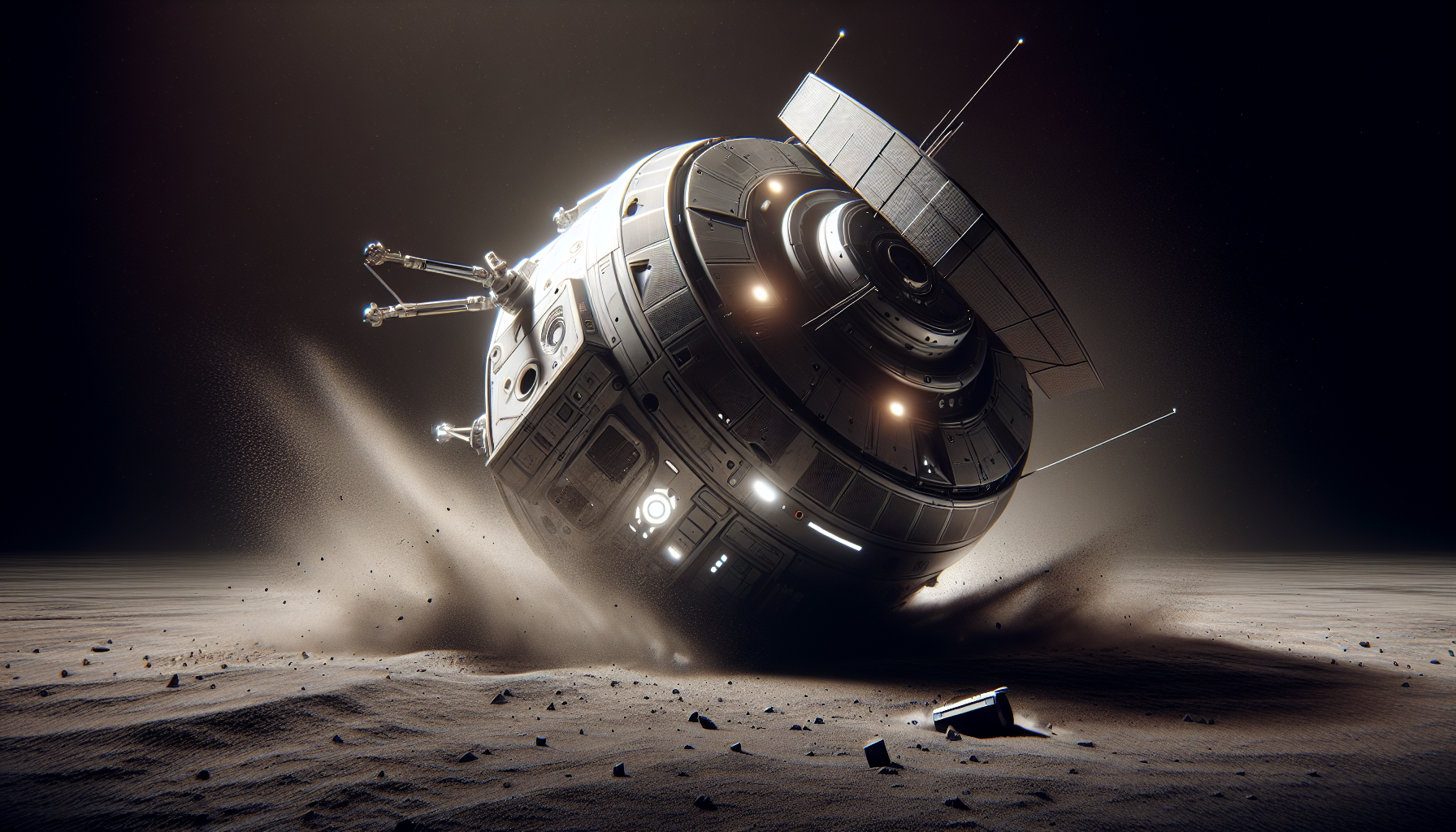 ## The Odysseus Lander: A Rough Landing but a Fruitful Mission
## The Odysseus Lander: A Rough Landing but a Fruitful Mission
The Odysseus spacecraft, launched by Intuitive Machines, encountered a rough landing on the moon. Despite the unfortunate event, the lander remains operational. The spacecraft, which is currently tipped over, was found to have made contact with the lunar surface at a higher speed than expected, possibly having snagged its foot during touchdown.
The Unexpected Touchdown
The initial evaluation suggested that Odysseus had made a vertical landing. Further examination, however, revealed the opposite. The reason for the initial misinterpretation was chalked up to “stale telemetry,” explained Steve Altemus, CEO and co-founder of Intuitive Machines. Even though the landing was not as expected, the solar panels on Odysseus still manage to absorb sufficient sunlight to stay powered, and communication with the lander is still stable.
The Cargo and Their Status
All cargo, barring one stationary artwork – Jeff Koons’ Moon Phases sculptures – are located on the flipped side of the lander. The NASA scientific cargo onboard have been gathering data throughout the voyage, descent, and touchdown. This information will be utilized to improve understanding of what occurred during the landing.
The EagleCam and Its Postponed Ejection
The team intends to eject the EagleCam, an apparatus designed by students at Embry-Riddle Aeronautical University. The EagleCam was supposed to be ejected during descent to document the landing moment. However, problems on the touchdown day delayed its ejection. Upon ejection, it will photograph the lander and its surroundings.
Laser Range Finders and Human Oversight
Just hours before attempting to land, while in lunar orbit, the team realized that the laser range finders essential for precise navigation were not functioning due to human oversight. Someone had neglected to activate a safety switch that would enable them to power on. Despite this drawback, the team managed to make an eleventh-hour adjustment using one of the onboard NASA cargo, the Navigation Doppler LIDAR (NDL), to steer the descent.
Conclusion
Despite the rough landing, the Odysseus lander is still operational and fulfilling its mission. The crew at Intuitive Machines demonstrated flexibility and quick problem-solving in the face of unexpected hurdles. The Odysseus mission is anticipated to last just over a week until the lunar night begins.
Questions and Answers
Q1: What transpired during the Odysseus spacecraft’s landing?
A1: The Odysseus spacecraft landed more quickly than expected and ended up tipped over on the moon’s surface.
Q2: How is the Odysseus spacecraft maintaining functionality after the incident?
A2: Despite being tipped over, Odysseus’s solar panels continue to draw sufficient sunlight to keep it powered, and communication with the lander is still active.
Q3: What was the EagleCam’s function in this mission?
A3: The EagleCam, designed by students at Embry-Riddle Aeronautical University, was meant to be ejected during the descent to document the landing. However, due to complications on touchdown day, its ejection was postponed.
Q4: How did the team resolve the issue with the laser range finders?
A4: Upon discovering that the laser range finders were not functional due to human oversight, they resorted to using one of the onboard NASA cargo, the Navigation Doppler LIDAR (NDL), to steer the descent.